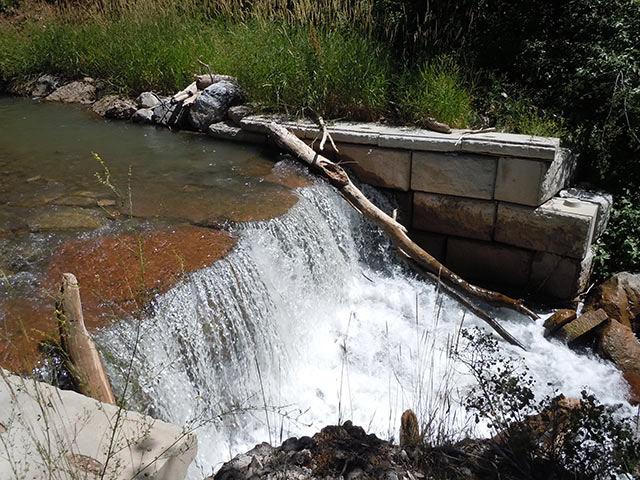Barriers to fish passage
Habitat fragmentation is the primary threat to many aquatic species in Utah. There are several types of barriers that cause this fragmentation. Barriers may be natural (waterfalls), artificial (perched culverts, buried streams or dams), and physio-chemical (temperature and toxicity of a waterbody). Aquatic barriers for fish passage are documented in the following map:
Types of Aquatic Barriers
Aquatic organisms, including fish, need to move for several reasons, including for food, spawning and protection. Barriers that prevent movement jeopardize their survival. Aquatic organisms need streams and rivers to be connected in order to migrate and complete their life cycle. Maintaining stream habitat connectivity is a goal of the Migration Initiative. Some common barriers to movement for aquatic organisms are:
Velocity Barriers
These undersized culverts constrict water flow and create velocities that are too high, making it difficult for fish and other aquatic organisms to move upstream.
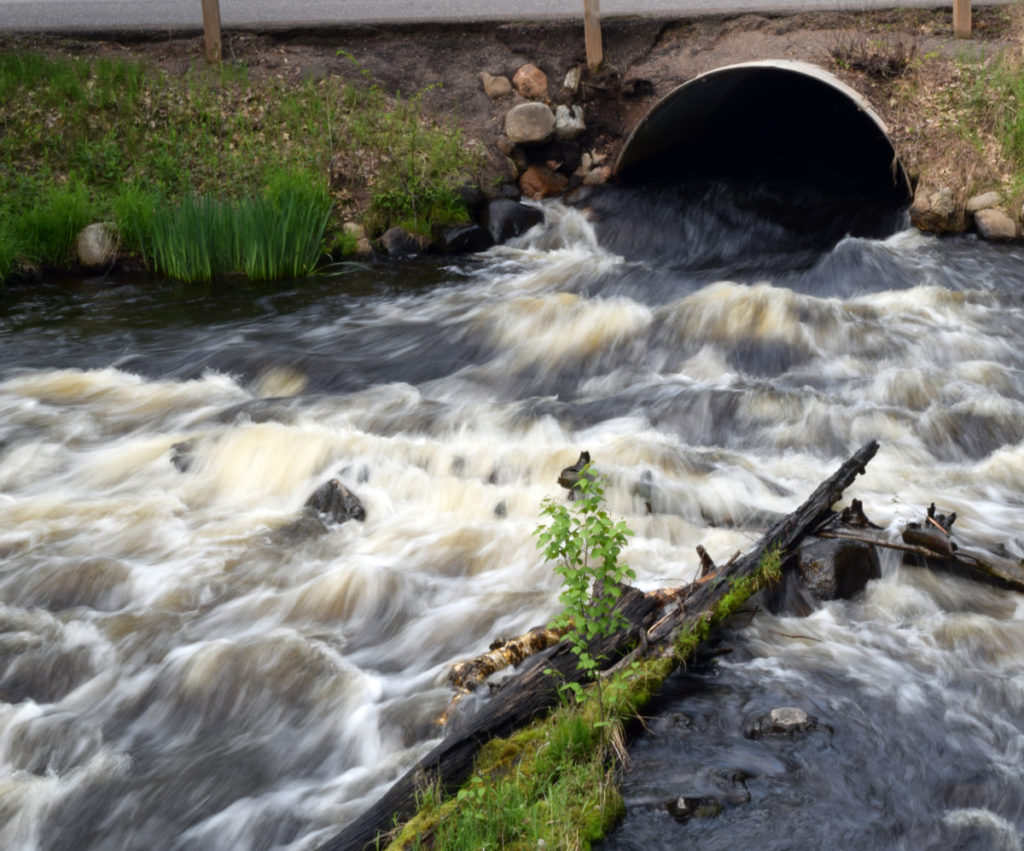
Low Flow Barriers
Water becomes too spread out, making passage harmful or impassable to fish and other aquatic organisms.
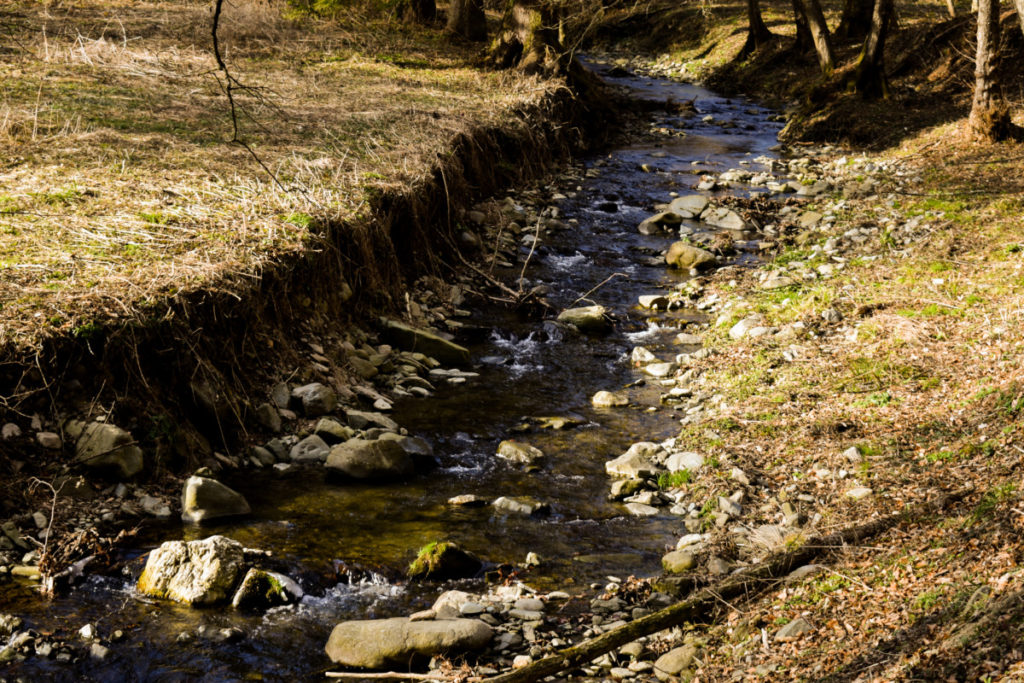
Jump Barriers
At times, high velocities can create a pipe that is perched above the water outlet. This is also created by setting the pipe too high during installation. Fish and aquatic organisms have to jump into the culvert to get through.
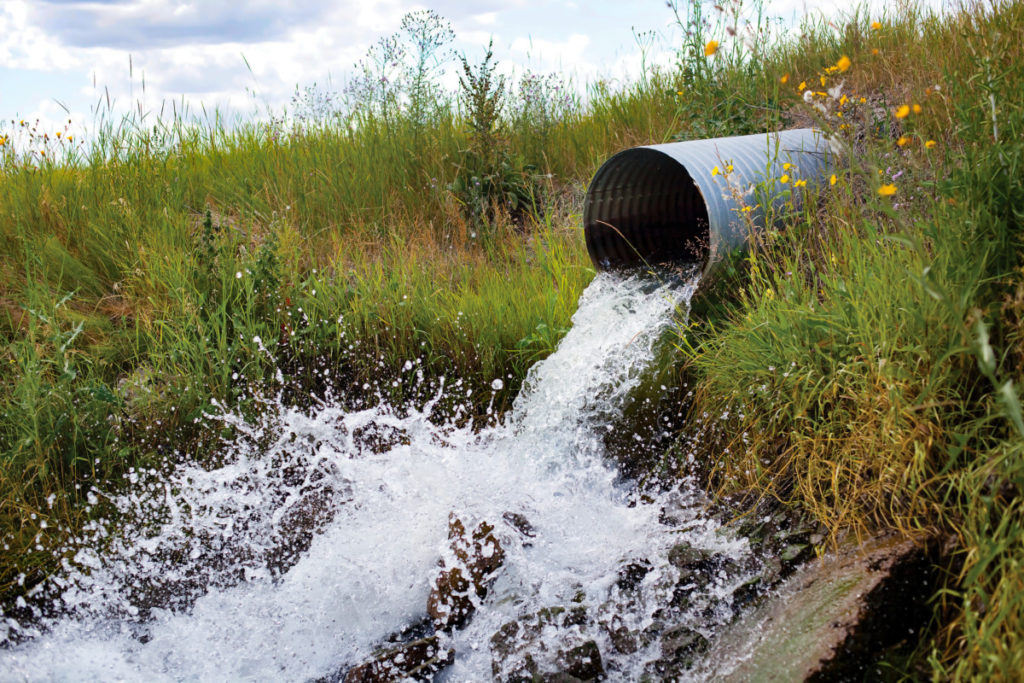
Exhaustion Barriers
Some culverts are too long, too steep or lack resting areas, which fish and aquatic organisms need when swimming at higher speeds for a long period of time.
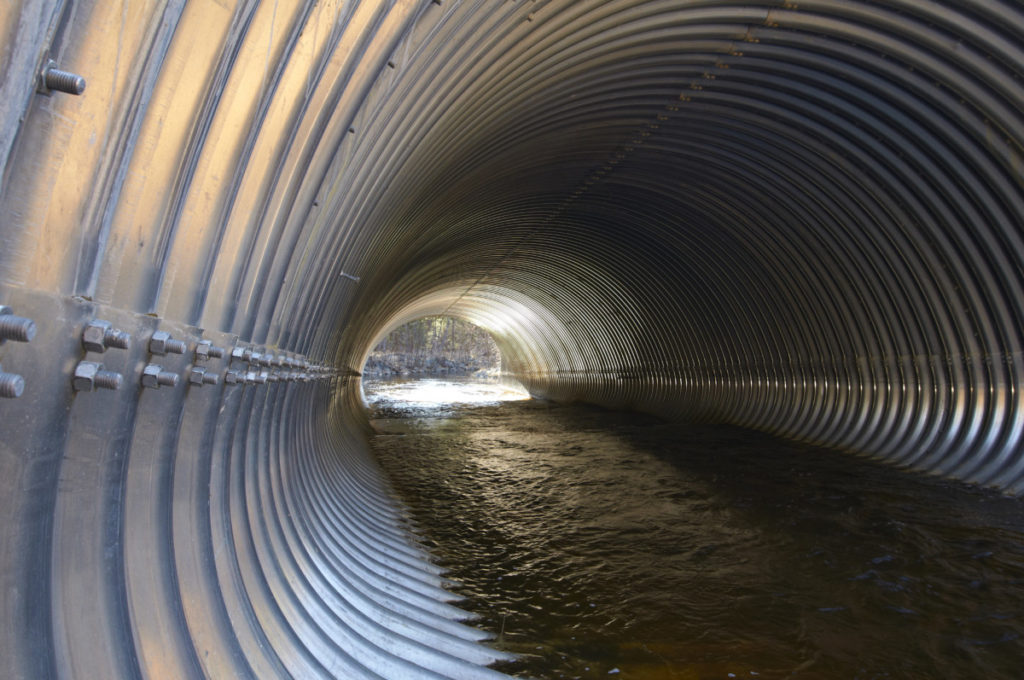
Dams or Irrigation Structures
A dam presents an obvious obstacle to fish migration. They also block downstream movement of fish. Use the map below to view locations and pictures of barriers to aquatic species’ movement throughout the state. Also referenced are barriers that have been removed or modified to allow fish movement.
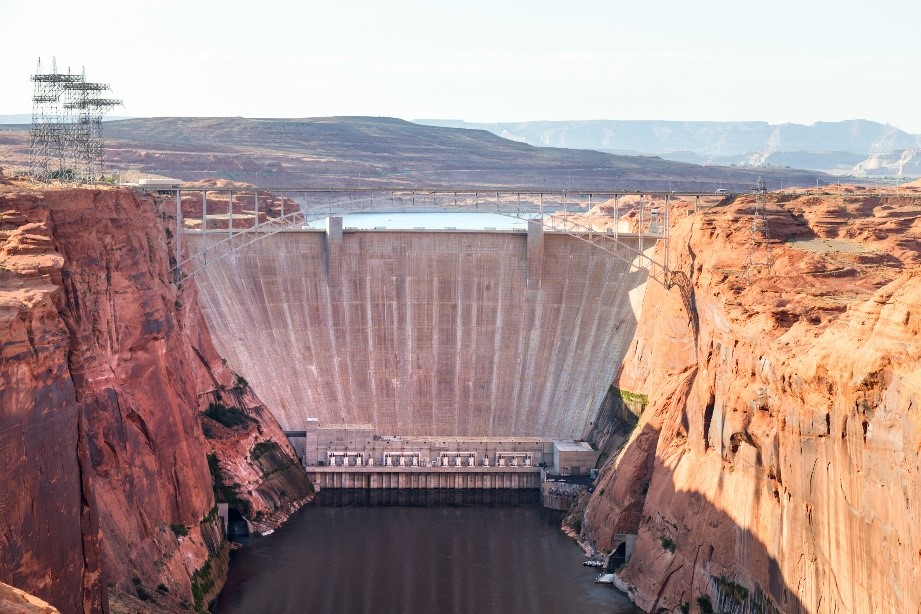
Management Barriers
Vertical obstacles in streams and rivers can impact fish by fragmenting populations. However, these barriers can also protect fish populations from predators, hybridization and disease. It is important for aquatic managers to identify and evaluate the impact of barriers on fish populations. In certain situations, barriers may be constructed to preserve unique species from the threats mentioned above. In Utah, natural or engineered barriers are used to protect cutthroat trout in headwater streams, to protect them from disease, hybridization with rainbow trout and competition with other non-native fish species.
